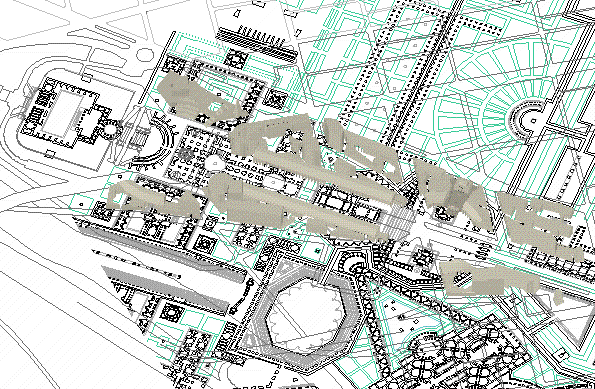2000.10.24 16:50
brown (lauf 2)
I too am working on a "theory" of architecture (style) that relates architecture to a "process" larger than architecture itself, that is, the notions that 1) human imaginations reenact corporal morphology and physiology, and 2) architecture (style) reenacts human imaginations. The main theory is called chronosomatics (meaning literally time + the body), and the primary text on chronosomatics is entitled The Timepiece of Humanity.
You ask: "What has 'metabolic process' have to do with it?" The metabolic process within humanity, and, more or less in all (animal?) life, is a creative-destructive duality wherein the corporal destruction of matter releases energy thus providing creative impetus. I theorize that the metabolic process is (just) one of the human physiologies reflected in human imagination, and, subsequently, the metabolic process becomes reflected in human activities and events. (Note: the other corporal physiologies like fertility, assimilation, osmosis, etc. also play key roles within human imagination, but the theory of chronosomatics suggests the metabolic process as being one particularly dominant in our times.)
011024a Acropolis Q and the Horti Luciliani 2266i03
011024b Ichnographia Quondam studies 2392i14
011024c IQ: Ichnographia true N & Phila. plan and Pkwy.Interp. true N; registered at City Hall at intersection of life/death 2392i15
2004.10.24 11:03
...context" - koolhaas
"Physical Context/Cultural Context: Including it All"
Stuart Cohen
"Ivan Leonidov's Dom Narkomtjazjprom, Moscow"
Rem Koolhaas and Gerrit Oorthuys
Both these articles are within Oppositions 2, January 1974.
An interesting coincidence.
| |

07102401 partial IQ Parkway Interpolation partial ICM 2110i64 b
| |
08102401 IQ08 Philadelphia grid complete Tiber fixed 2390i09
2013.10.24 12:04
Why won't you design what we (the public) want?
"We use the term 'Stalinist architecture' to describe buildings concieved between 1933, the date of the final competition to design the Palace of the Soviets, and 1955, when the Academy of Architecture was abolished. A government decree was issued in the same year as the abolition. Entitled 'Measures for the further industrialization, improvement in quality and reduction in cost of construction', it marked the return of Soviet architecture to the modern movement.
"Between 1934 and his death in 1953, Stalin created and sustained an unwieldy system of repression. In such a tyranny, every element of society must be in the service of the state, and architects, although less effected than writers and artists, were no exception. To enable Stalin to implement his immense construction programme, prisoners were frequently exploited for forced labour. Prisoners (or zeks), working in huge numbers, built the most magnificent Stalinist works, from dams, locks, canals and skyscrapers to entire cities, with the most basic equipment. As his power increased, Stalin's own taste became law; his personal interference is evident in many surviving plans.
"Stalin's Russia was a nightmare of double standards and double thinking, when the simple aspirations of ordinary people could amount to crimes against the state.
Alexei Tarkhanov & Sergei Kavtaradze, Stalinist Architecture, 1992.
| |
14102401 Dresdner Bank plans elevations section corrected data 223ci08
14102401 Christian Kerez Three Museums and One Square Guangzhou
17102401 GAUA IQ24 plans fixed 2429i223
17102402 GAUA 106 site plan 1100x550 working schematic model 2466i01 b
18102401 Renaissance Rome facades image Le Corbusier architecture elevations sections 247ai04
18102401 BIG Southbank Tower Melbourne
19102401 House 10: Museum Maison Electronic Calculation Center Olivetti Neue Nationalgalerie Levy Memorial Playground St. Pierre at Firminy-Vert Sea Ranch Condominiums Maison de l'Homme Cambridge History Faculty Building Palais des Congrès Acadia National Park Headquarters Building Smith House plan comparisons 2197i23
|
